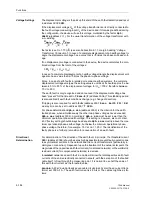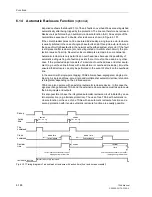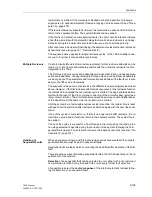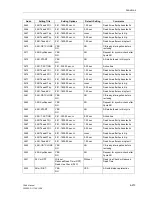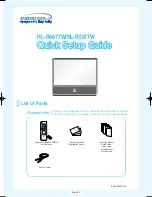
Functions
6-198
7SA6 Manual
C53000-G1176-C156-2
Figure 6-104 Example of adaptive dead time (ADT)
As is shown by the example, the adaptive dead time has the following advantages:
•
The circuit-breaker at position
II
is not reclosed at all if the fault persists and is there-
for not unnecessarily stressed.
•
With non-selective tripping by overreach at position
III
no further trip and reclose
cycles occur here because the short-circuit path via busbar B and position
II
re-
mains interrupted even in the event of several reclosure attempts.
•
At position
I
overreach is allowed in the case of multiple reclosures and even in the
event of final tripping because the line remains open at position
II
and therefore no
actual overreach can occur at
I
.
The adaptive dead time also includes the reduced dead time because the criteria are
the same. There is no need to set the reduced dead time as well.
Close Command–
transfer
(Remote–CLOSE)
With close command transmission the dead times are only set at one line end. The
other (or the others in case of lines with more than two end(s)) is (are) set to “adaptive
dead time”. These ends respond to the received close command from the transmitting
end.
The transmission of the close command by the transmitting line end is delayed until it
is sure that the local reclosure was successful. This means that following reclosure a
short delay for detection of further local faults is provided. This delay prevents
unnecessary closing at the remote end on the one hand but also increases the time
until reclosure takes place there. This is not critical for a single-pole interruption or in
radial or meshed networks because no stability problems are expected under these
conditions.
Bild 6-105 AR Remote
–
Close function via protection interface
Z1B
Z2
A, B, C busbars
I
,
II
,
III
relay locations
tripped circuit-breakers
Z1
Z1B
Z2
Z1
A
B
C
I
(defined dead times)
II
(ADT)
III
AR Rem.Close
>AR Rem.Close
≥
1
7SA6
AR in
ADT mode
AR with
defined
Dead
Times
7SA6
PI1
PI1
A
B
Summary of Contents for siprotec 7SA6
Page 2: ...Siemens Aktiengesellschaft Book No C53000 G1176 C156 2 ...
Page 18: ...xviii 7SA6 Manual C53000 G1176 C156 2 ...
Page 32: ...Introduction 1 14 7SA6 Manual C53000 G1176 C156 2 ...
Page 82: ...Hardware and Connections 2 50 7SA6 Manual C53000 G1176 C156 2 ...
Page 119: ...SIPROTEC 4 Devices 4 25 7SA6 Manual C53000 G1176 C156 2 Figure 4 20 CFC Logic example ...
Page 190: ...Configuration 5 62 7SA6 Manual C53000 G1176 C156 2 ...
Page 652: ...Installation and Commissioning 8 78 7SA6 Manual C53000 G1176 C156 2 ...
Page 724: ...Technical Data 10 56 7SA6 Manual C53000 G1176 C156 ...
Page 800: ...Appendix A 76 7SA6 Manual C53000 G1176 C156 2 ...
Page 866: ...Appendix B 66 7SA6 Manual C53000 G1176 C156 2 ...

